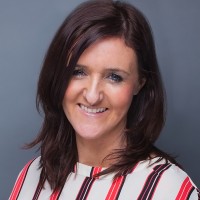
Following the widely anticipated cut to the Bank of England Base Rate earlier this month, we saw the first rate cut for seven years.
This is great news for the estimated 1.5m borrowers benefiting from a tracker product. While it has no immediate impact on those homeowners with fixed rate mortgages, the package of measures introduced by the MPC alongside the 0.25% rate cut should ensure that the cost of borrowing should continue to remain extremely competitive and it is highly likely that fixed rate borrowing will also fall in the coming months.
The availability of significantly lower cost funding is already prevalent in the second charge market, following a period of sustainable rate reductions resulting from a combination of both increased competition and appetite to lend in this sector.
Casting our minds back to 2009, the rates for creditworthy borrowers with low Loan to Value ratios varied between just under 9% all the way up to circa 12%. Now the rates available for the same profile of borrower start from as low as 3.95% above Bank Base, representing around a 65% price cut from equivalent products being offered seven years ago.
Equally, products in the second charge space have become more sophisticated and have the look and feel of more traditional mortgage products. There is a good availability of tracker, fixed rate and more recently discounted products available. Whilst not all lenders have passed on the base rate cut, lenders such as Precise Mortgages have applied the full rate cut benefiting both new and existing second charge borrowers.
Second charge lenders who strategically want to attract growing numbers of mortgage intermediaries to their market place will undoubtedly focus on how product innovation can play an important part in this process.
Optimum Credit: The innovator
Cardiff based Optimum Credit took an innovative approach to second charge pricing when it launched into the market in June 2014. Its proposition is distinctive in that it does not publish a rate card but the unique pricing policy results in each customer receiving a rate that reflects a customer’s individual circumstances. They do this using an advanced pricing algorithm which looks at more than just LTV and a minimum credit score which differs to the approach used by most matrix-based lenders.
Currently over 50% of all completions through Optimum Credit do not require a physical valuation to be undertaken, this enables an introducing broker to guarantee a customers’ rate at point of sale, providing certainty to the customer. There is no doubt that Optimum‘s approach to technology is leading to reduced costs and processing times whilst improving conversions.
Shawbrook Bank also adopted a similar approach when they launched their “Star” product range at the start of 2016 which also moves away from the more traditional rate card approach. Instead rates are priced for risk and are linked to the credit profile of the applicant. What does this mean for the consumer? In some instances, rates can be produced which are lower than the published headline rates, giving borrowers access to even cheaper rates of interest.
Second space challengers
Challenger Banks are prominent in the second charge space such as One Savings Bank, Shawbrook, United Trust Bank and Precise, so the latest to join this club will be Masthaven which plans to launch its digital bank service later this year.
Of course it isn’t all about price, with second charge lenders offering a flexible approach to a wide range of borrowers who are generally under-served within the mainstream market, often this is a case of being able to offer more bespoke lending solutions to meet more complex borrowing scenarios. However, with an increasing number of mainstream borrowers who would benefit from leaving their existing mortgage intact and raising money through a second charge, rate is an important consideration. The continued competitiveness within the industry and the desire to grow this market to its true potential is crucial in offering consumers a better deal and increased options to consider how best their borrowing needs can be addressed.












